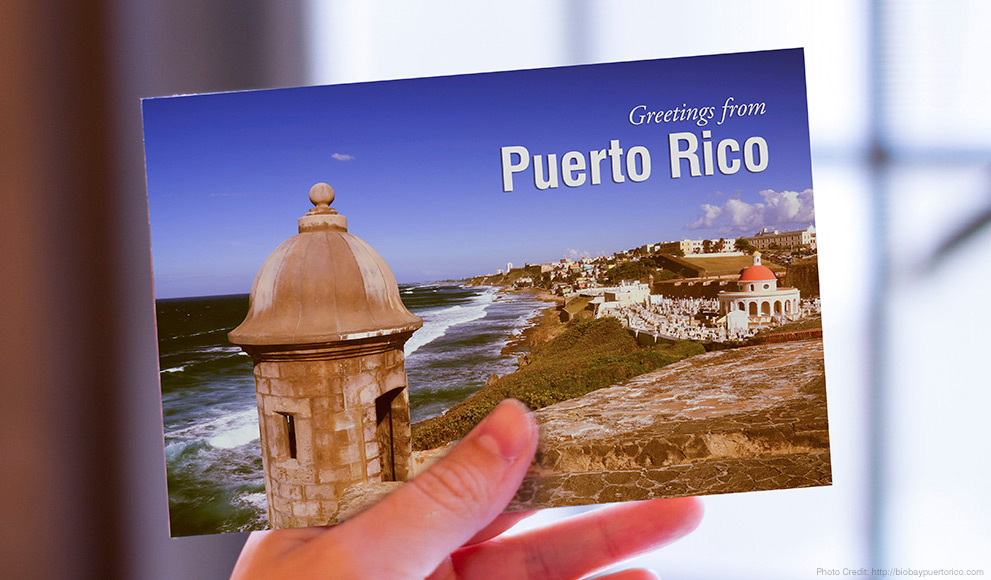Our Summer Postcard Series Continues With a Letter from Rebecca Selch ’17

The fourth in a summer postcard series featuring letters from students, Rebecca Selch ’17 writes from Ponce, Puerto Rico, where she is participating in the Global Citizenship Program through Wellesley's Center for Work and Service.
Dear Wellesley,
I just got back from exploring a row of gutted houses I’ve had my eye on in downtown Ponce, Puerto Rico. Skeletons of what were once luxurious mansions lay buried beneath garbage and vegetation, and a structure I had only glimpsed from the street turned out to be an old boys school, closed down in the 1960s and left to decay.
When most people think of ruins, they think of cities like Rome or Athens, with ancient cities standing side by side with their contemporary counterparts. Nothing, then, could have prepared me for the splendor and sadness of Ponce. Once the luminescent “pearl of the South,” time has knocked down her neoclassical walls and chipped her Spanish colonial paint. What remains is a city scarred by crumbling buildings, garbage, and rampant homelessness. The city itself operates almost as a museum, with artifacts of her glorious past as commonplace as the lizards that roam the streets.
This disconnect between romanticized ghost town and urban center makes working at Museo de Arte de Ponce both fascinating and frustrating. The building in which we now operate was built in 1965, designed by architect Edward Durell Stone (who also created the Kennedy Center in Washington, D.C., oversaw the renovations of MoMa, and the original Museum of Art and Design in New York City). The museum itself was founded in 1956 by Don Luis Ferré in order to give the Puerto Rican people a world-class museum and bring great, though mostly European, art to the people. He believed that if people were unable to travel and see the world, then they should have a museum right around the corner where they could expand their horizons.
The construction of the current building came on the tail end of prosperity in Ponce and Puerto Rico in general. In 1948, Luis Muños Marín became the first democratically elected governor of Puerto Rico, and in 1952, the U.S. incorporated the resource-rich island into a Commonwealth. While many of Muñoz’s policies were deeply flawed (and ended up contributing to the island’s economic decline later), they initially brought wealth to parts of a populace that had previously only known severe poverty. And, of particular interest to me, Muñoz stimulated arts and education programs in Puerto Rico, similar to what the Works Progress Administration did in the U.S. during the 1930s and ’40s. Building a world-class museum made sense in this exciting new time of art, wealth, and prosperity.
However, by the ’70s and ’80s it became clear that Puerto Rico was in trouble. Wealth dropped as crime, the drug trade, and eventually U.S. corporations infiltrated the island. The city no longer had money for upkeep and restoration of the infrastructure in Ponce. As a result of all these changes, the beautiful mansions began to fall away and to attract the growing homeless population.
As you can imagine, my experience living in and learning about Ponce has colored my experience of working at the Museo de Arte de Ponce. While I have been struck by the museum’s commitment to access and outreach—be it through exhibitions that increase the understanding of the average visitor or workshops for the arts in public housing projects—I also wonder what museum professionals can do for their communities. What is the role and responsibility of museums and other cultural institutions in helping to revitalize their communities? Do they have a responsibility to dismantle systems of inequality? How can museums better serve their audiences, their communities, and ultimately, the world around them?
I don’t yet know how to answer these questions, but I will continue to ponder as I explore Ponce’s streets, trying to piece together the history of a forgotten city with its (hopefully) bright future.
All the best,
Rebecca
Rebecca Selch ’16 is a sociology and art history major. She is also President of the Wellesley Widows.
